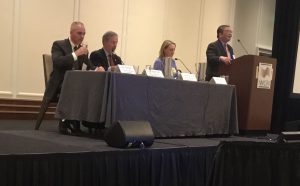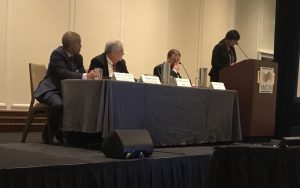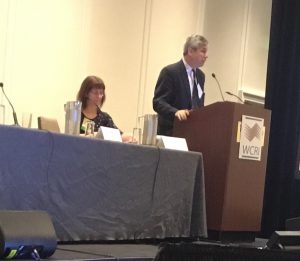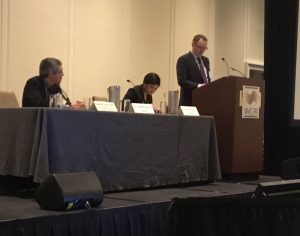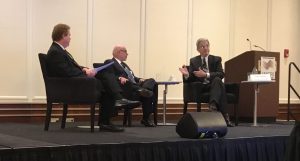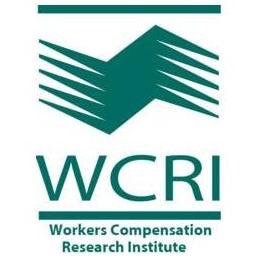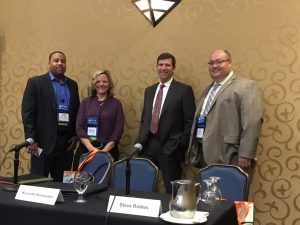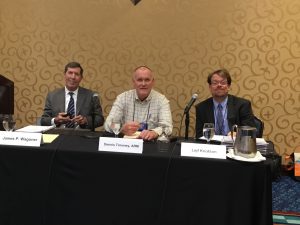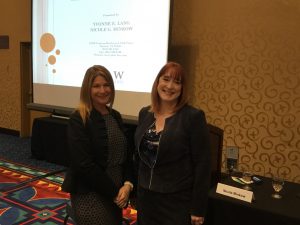Alternatives to Opioids in Chronic Pain
At the 2017 WCRI Annual Issues and Research Conference, a panel discussed alternatives to opioids in chronic pain. The panel included: Kathy Fisher – WCRI (moderator) Dean Hashimoto, MD – MA Department of Industrial Accidents Paul Sighinolfi – ME Workers’ Compensation Board Paul Tauriello – CO Division of Workers’ Compensation Dawn Ehde, MD – University of Washington School of Medicine, Dept of Rehabilitation Medicine Marijuana In January 2017, the National Academies of Sciences, Engineering and Health published a comprehensive report of the issue of marijuana as a medical treatment option. They reviewed available evidence regarding the therapeutic value of marijuana
(Read the full article…)
How States are Combating the Opioid Epidemic
At the 2017 WCRI Annual Issues and Research Conference a panel discussed the latest WCRI research on the opioid epidemic and the steps states are taking to counter this epidemic. The panel was: Dr Vennela Thumula – WCRI Dwight Lovan – formerly of Kentucky Department of Workers’ Claims Judge Omar Hernandez – Massachusetts Department of Industrial Accidents According to preliminary WCRI study findings (subject to change) the frequency of opioids per claim has declined for most states between 2010 and 2015. They are seeing significant reductions in the morphine equivalent amount that injured workers received with some states seeing reductions over
(Read the full article…)
California’s Post-Reform Outcomes
At the 2017 WCRI Annual Issues and Research Conference, Alex Swedlow from the California Workers’ Compensation Institute discussed the impact of California’s workers’ compensation reforms. The highlights: The SB 863 reforms in California have resulted in declines in medical costs and overall claims costs for California employers. Average medical costs per claim at 24 months post-injury have been relatively flat the last three years. A large factor in these savings is the revised fee schedule based on RBRVS. Removal of duplicate payment for surgical hardware has showed a very significant savings for these procedures. Changing this reimbursement rule resulted in
(Read the full article…)
Worker Outcome Surveys and the Importance of Communication
At the 2017 WCRI Annual Issues and Research Conference, Bogdan Savych of WCRI and Glenn Pransky of Liberty Mutual Research institute for Safety talked about the importance of worker perceptions and communications its injured workers. WCRI presented research on their worker outcome surveys. WCRI started injured worker surveys because the voice of injured workers is often missing from discussions about how workers’ compensation needs to improve. WCRI studies show many factors that impact return to work. But the factor they focused on for these surveys was trust of the workplace. Examples: Among workers who had worst claim outcomes, 48% stated
(Read the full article…)
Impact of the 2016 Election on Health Care, Labor and Workers’ Compensation
At the 2017 WCRI Annual Issues and Research Conference, former US Representative Henry Waxman and former US Senator Tom Colburn discussed how the 2016 election is impacting a variety of issues. The discussion was moderated by WCRI CEO John Ruser. Healthcare The Affordable Care Act was complex legislation and changing it is changing it. By design, ACA attracted high-risk individuals into the insurance marketplace by prohibiting carriers from excluding pre-existing conditions. The costs of these high-risk individuals were supposed to be offset by the mandate requiring everyone in the US to have health insurance so the risk was spread across
(Read the full article…)
WCRI Annual Issues & Research Conference
Conference Chronicles will be blogging from sessions at the 33rd WCRI Annual Issues & Research Conference on March 2-3, 2017, in Boston, MA. The Workers Compensation Research Institute (WCRI) is an independent, not-for- profit, research organization that provides objective information about public policy issues involving workers’ compensation systems. The Institute’s work helps those interested in improving workers’ compensation systems by providing much-needed data and analysis. Learn more here.
Cyber Risks for Public Entities
At the 2017 PARMA Conference, a panel discussed cyber liability concerns for public entities. The panel was: John Chino – Arthur J Gallagher Steven Robinson – Risk Placement Services, Inc. Elissa Doroff – XL Catlin Common Patterns of Cyber /Claims: Missing or stolen laptop or storage devices Mismailing Erroneous data posting Willful release based on fraudulent instruction (social engineering, Phishing), this is sometimes not covered under Cyber but instead crime Compromised system (hacking) Loss or theft of physical documents Lost back up data or tape Breach caused by third party vendor Improper document or equipment disposal Insider These are the
(Read the full article…)
Disaster Response for Public Entity
At the 2017 PARMA Conference, a panel discussed disaster response planning for public entities. The panel was: Ken Hernandez – County of San Bernardino Steve Robles – County of Los Angeles Michelle Colosimo – Black Swan Solutions Ariel Jenkins – Safety National Disasters can be both natural disasters like earthquakes or floods and also man-made events such as mass shootings or bombings. Public entity risk managers need to be mindful of not only their employee’s response to a disaster, but their responsibilities to the general public. The government needs to be able to continue to function through a disaster. One
(Read the full article…)
Investigation Due Diligence
At the 2017 PARMA Annual Conference, a panel discussed current and emerging issues involving risk management for public entities and joint powers authorities in relation to the requirements and conduct of investigations, including investigations of reported incidents of discrimination, harassment, or safety violations. Essentially this session was about the fundamentals of investigations in these matters. The panel was: Lejf Knutson – Partner – McCormick, Barstow, Sheppard, Wayte & Carruth Dennis Timoney – Chief Risk Officer – Special District Risk Management Authority James Wagoner – Partner – McCormick, Barstow, Sheppard, Wayte & Carruth Catherine Jones – Asst Professor, Occupational Safety and
(Read the full article…)
Navigating the Reasonable Accommodation Maze
At the 2017 PARMA Annual Conference, Yvonne Lang and Nichole Minkow from the firm Pearlman, Borska, & Wax talked about the challenges associated with reasonable accommodation of disabled workers. Interactive Process Conundrum: California law requires employers to engage in a “timely, good faith, interactive process.” Required for all employees AND applicants for jobs. This obligation often interferes with management ideas of how to effectively run their business. Disability discrimination is the most common complaint filed with DFEH in California. Laws protecting disabled employees in California: Workers’ compensation Family medical leave act (FMLA) California Family Rights Act (CFRA) Americans with Disabilities
(Read the full article…)

